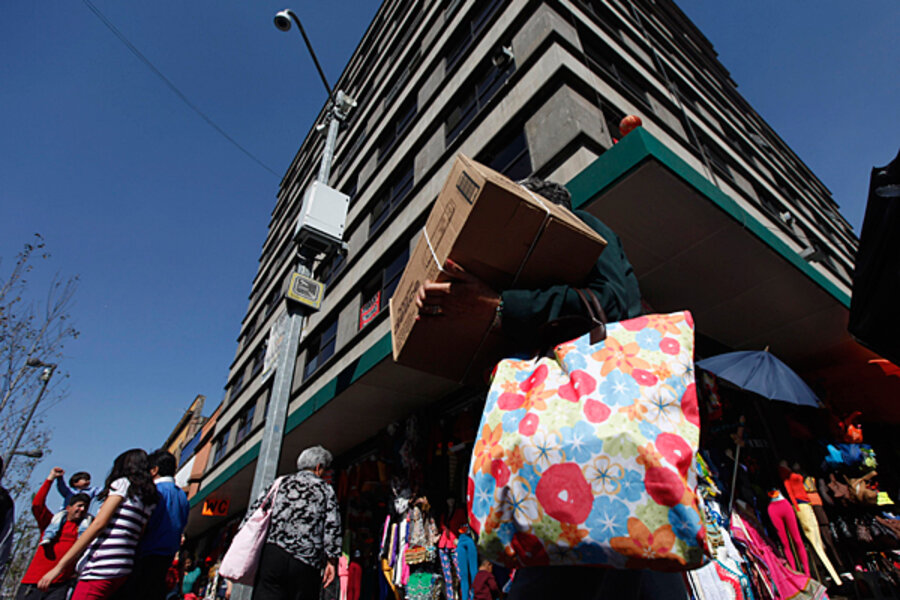Mexico in the middle? Slowly, more people leave the lower class.
Loading...
| MEXICO CITY
In the geographic heart of Mexico City, the borough of Benito Juarez offers a vision for Mexico’s middle class future.
When low-cost mass merchandiser Comercial Mexicana opened its first upscale grocery, City Market, it did so on a corner in the Colonia Del Valle neighborhood in Benito Juarez. Shoppers crowd the aisles of polished organic produce, pay $30 for Scottish smoked salmon, and sip cappuccinos at an in-house café.
Benito Juarez doesn’t contain the capital’s richest neighborhoods, where mansions hide behind enormous walls. But it doesn’t contain the poorest barrios, either. It’s solidly middle class. And the rest of the country may be headed in that direction, too, albeit slowly.
This week, national statistics agency INEGI released a new study showing that Mexico’s middle class grew 4 percent between 2000 and 2010 to 39 percent of the population, or 44 million people.
INEGI’s definition of the middle class weights spending above earnings, in part because people have greater incentive to underreport the latter, the report said. INEGI looked at 17 variables, including how much people spent on dining out, personal care, and credit cards, among other things.
This is the picture INEGI paints of Mexico’s middle class: Three quarters live in cities. At least one member of the typically four-member household holds a job in the formal sector, and the head of household has at least some high school education. The children attend public school and have a computer at home.
Mexico City’s Benito Juarez borough has the city’s highest level of schooling by far, with more than 74 percent of residents claiming some time spent studying in high school, technical school, or college, according to 2005 INEGI data. In fact, neighborhoods like Colonia del Valle are packed with schools. The borough has the highest average per capita income and the most homes with a computer in Mexico City.
“For a long time, seeing Mexico as poor has been a pretext for not doing what should be done [for development] and an argument for sustaining the impossibility of development,” wrote Luis de la Calle, author of Mexico: A Middle Class Society, Poor No More, Developed Not Yet, in an Op-Ed in the capital’s El Universal newspaper.
But it’s also true that most of Mexico still doesn’t look much like the Benito Juarez borough. Some 59 percent of Mexicans reside in the lower class, according to the INEGI report. This largest group of people are not necessarily impoverished, the report says, but their position is precarious. They could be one pink slip or illness away from poverty; an economic downturn or high inflation could hit them especially hard.
Just 1.7 percent of Mexicans qualify as upper class.
The agency notes in its report that measuring the middle class is a “complex discussion.” It remains a hotly debated topic in Mexico and across Latin America, where the spread between the richest and poorest remains abysmal but where the ranks of the middle are swelling, especially in places like Brazil, Chile, and Peru.
Mr. De la Calle argues that perceiving Mexico as middle class allows for the visualization of a development that could come from within these households.
“The investment of households in their own future” – a central characteristic of the middle class, he wrote – “is indispensable for the construction of a modern country, which is now possible.”








